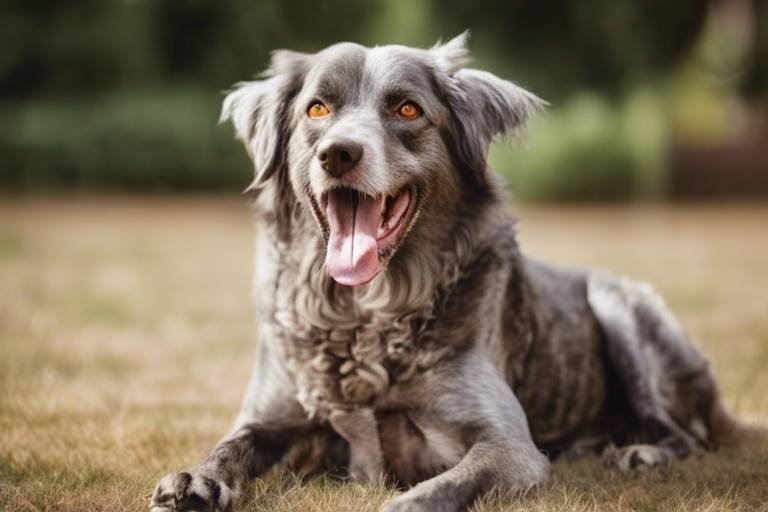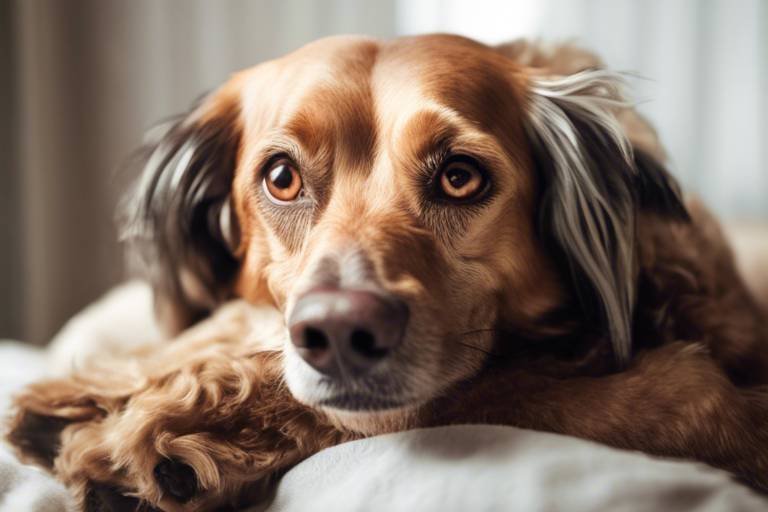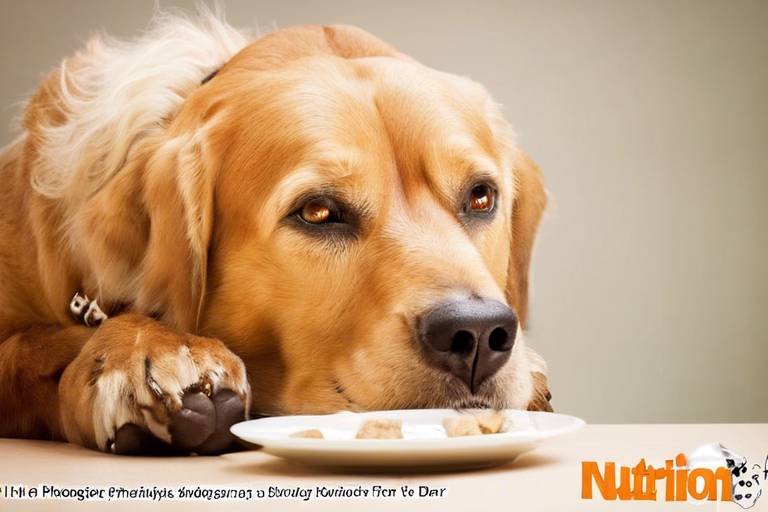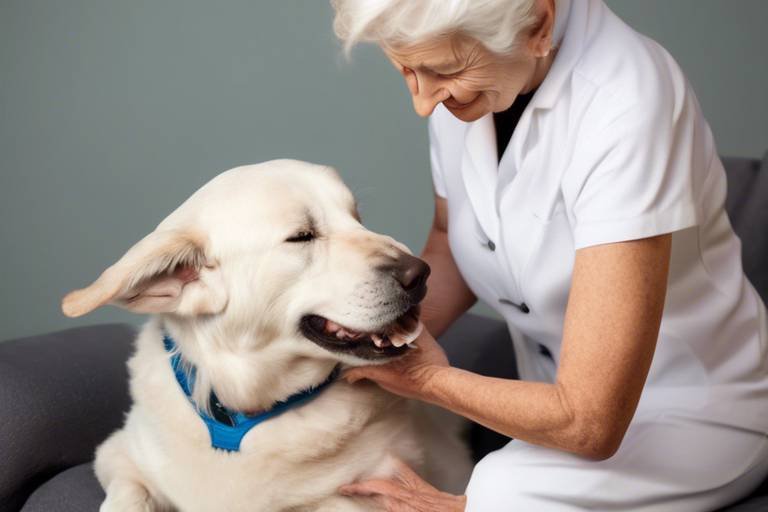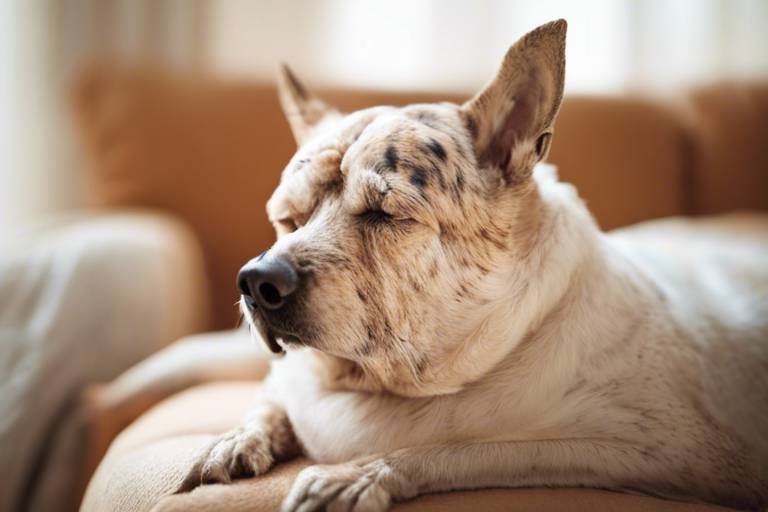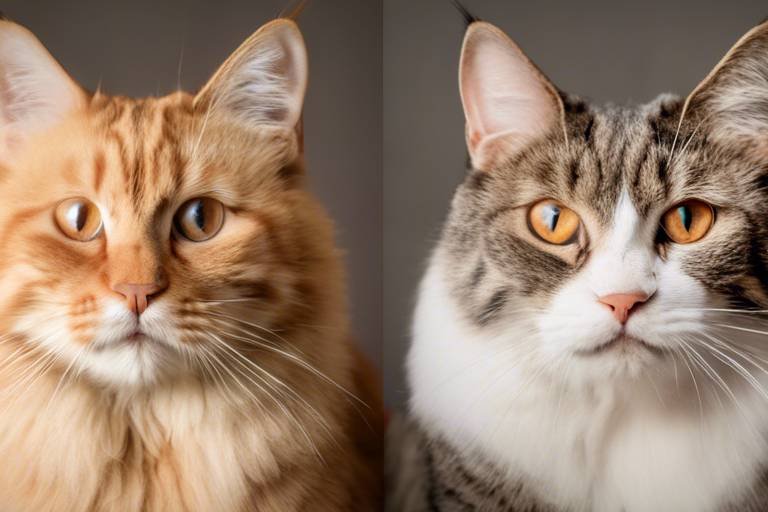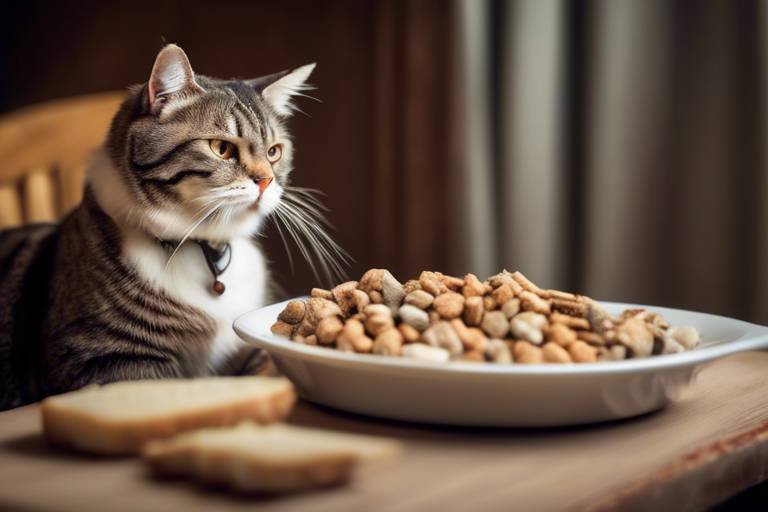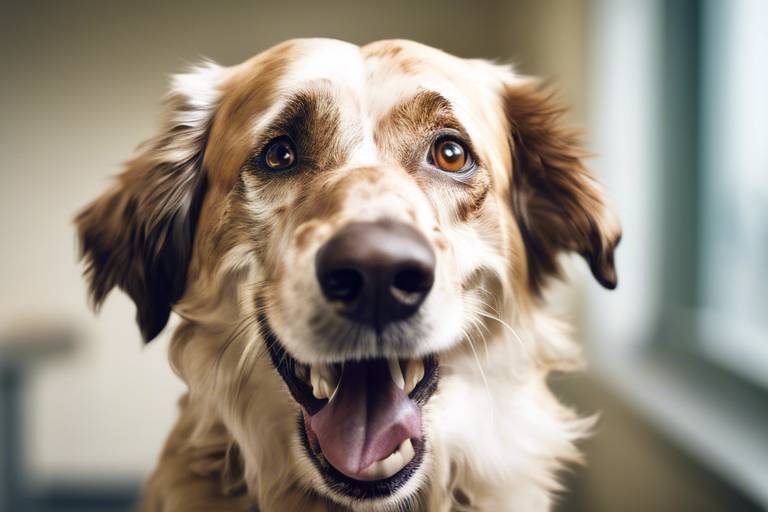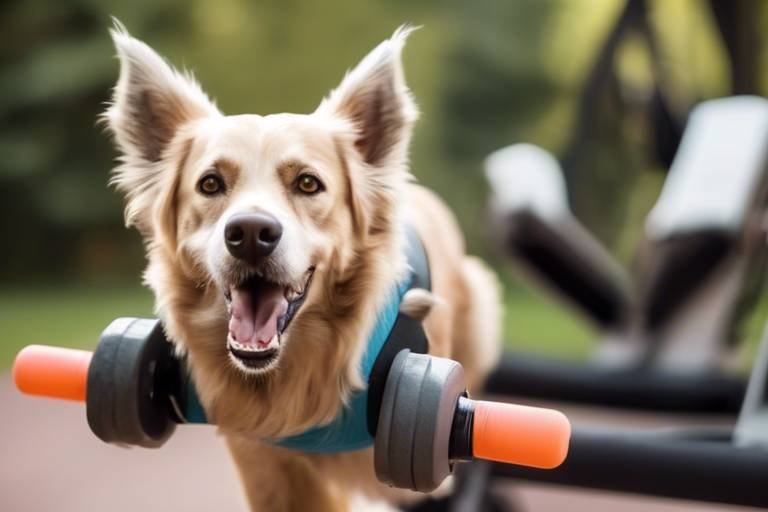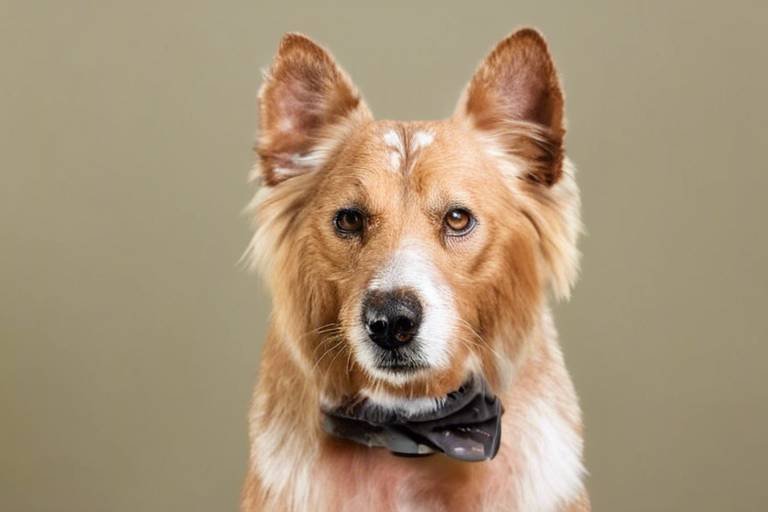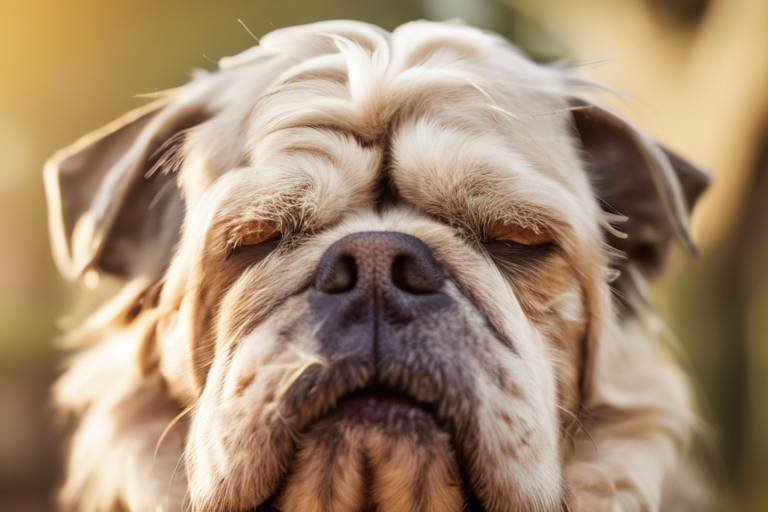The Importance of Hydration for Older Pets
As our furry companions age, their needs evolve in many ways, and one of the most crucial aspects to consider is hydration. Just like us, older pets face a myriad of changes in their bodies that can affect how they process and require water. Have you ever noticed how your pet seems to drink less as they get older? This is not just a coincidence; it’s a natural part of aging, and it can have serious implications for their health. Adequate hydration is vital for maintaining essential bodily functions, supporting organ health, and ensuring overall well-being. So, why is hydration particularly important for older pets? Let's dive into some of the key reasons.
First and foremost, hydration helps in the regulation of body temperature. Older pets often have a harder time thermoregulating, meaning they struggle to maintain a stable body temperature. This can lead to overheating or hypothermia if they are not properly hydrated. Additionally, water plays a critical role in joint health. As pets age, they may develop arthritis or other joint issues, and staying hydrated can help lubricate their joints and reduce discomfort. Imagine trying to move around with stiff joints; drinking enough water can make all the difference!
Moreover, hydration is essential for kidney function. Older pets are more susceptible to kidney disease, and adequate water intake helps to flush out toxins and maintain kidney health. A well-hydrated pet is less likely to develop urinary tract infections, which can be particularly common in older animals. Just think of water as a natural cleanser for your pet’s body, keeping everything running smoothly.
Another aspect to consider is that many older pets may have a decreased sense of thirst. This can make it challenging for them to recognize when they need to drink, leading to potential dehydration. Therefore, it’s crucial for pet owners to be proactive in ensuring their pets have easy access to fresh water at all times. Placing multiple water bowls around the house can be a simple yet effective strategy to encourage regular drinking. You wouldn’t want your beloved pet to feel like they have to search for a drink, would you?
In conclusion, the importance of hydration for older pets cannot be overstated. It’s a fundamental aspect of their health that requires attention and care from pet owners. By understanding their unique hydration needs, recognizing the signs of dehydration, and implementing effective hydration strategies, you can help ensure your furry friend remains happy, healthy, and hydrated throughout their golden years.
- How much water should my older pet drink? The amount varies depending on their size, diet, and health conditions. A general rule is to provide about 1 ounce of water per pound of body weight each day.
- What are the signs that my pet is dehydrated? Look for symptoms like dry gums, lethargy, sunken eyes, or a decrease in appetite. If you notice these signs, it’s important to consult your veterinarian.
- Can I give my pet wet food to help with hydration? Yes! Wet food can significantly increase your pet's water intake as it contains a higher moisture content than dry kibble.
- What should I do if my pet refuses to drink water? Try adding flavor to their water with low-sodium broth or offering ice cubes. If they still refuse, consult your veterinarian for advice.
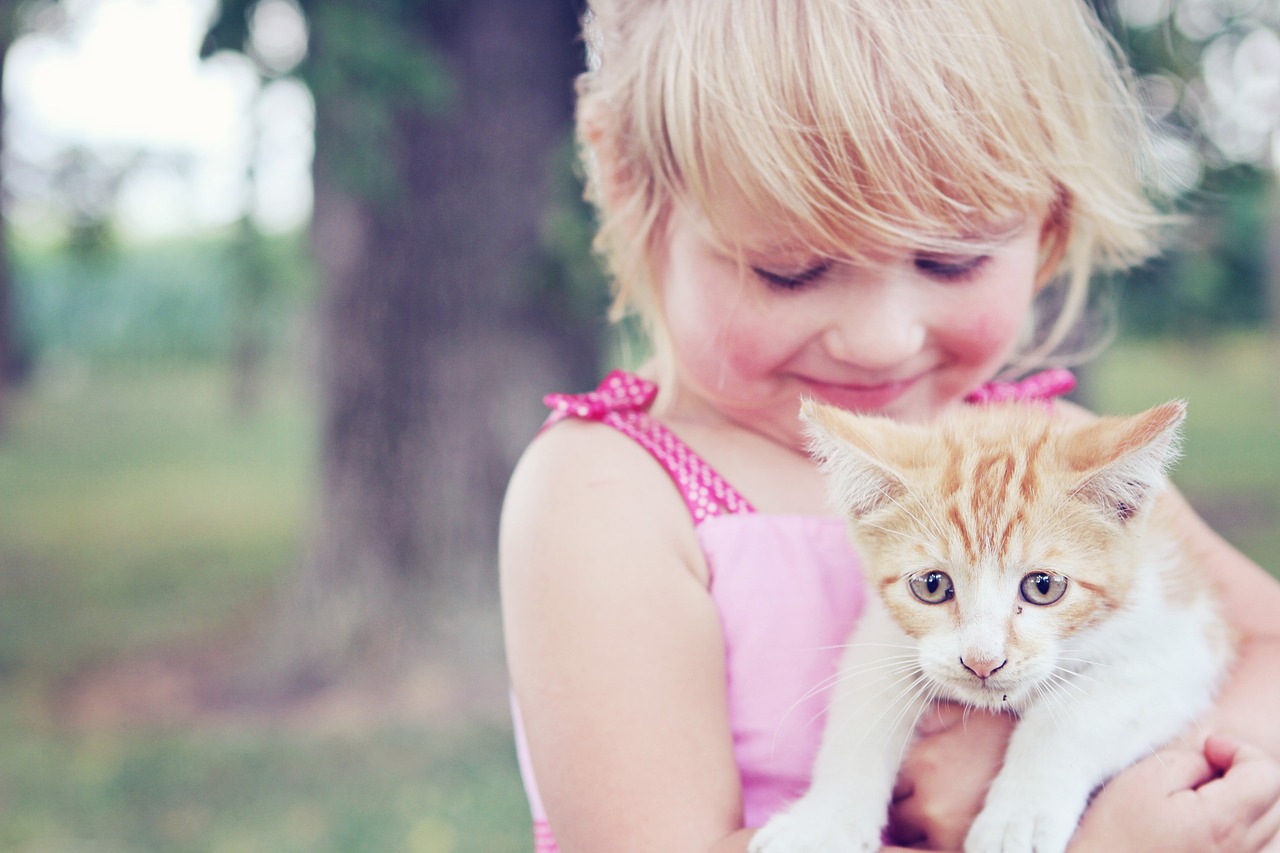
Understanding Hydration Needs
This article explores the critical role hydration plays in the health and well-being of older pets, highlighting various aspects of hydration that pet owners should be aware of.
As our beloved furry companions age, their bodies undergo numerous changes that can significantly affect their hydration needs. Just like us, older pets experience a decline in their ability to conserve water, making it crucial for pet owners to understand these unique requirements. A well-hydrated pet is a happy pet, and ensuring that they receive adequate water intake is essential for their overall health.
One of the primary changes in older pets is a decreased sense of thirst. This means that they may not drink water as frequently as they should, leading to potential dehydration. It's vital to be proactive in monitoring their water consumption and encouraging them to drink more. You might wonder, "How much water should my pet be drinking?" A good rule of thumb is that pets typically need about 1 ounce of water per pound of body weight each day. For example, a 10-pound dog should ideally consume around 10 ounces of water daily.
Additionally, factors such as diet, activity level, and environmental conditions can influence hydration needs. For instance, pets that eat dry kibble may require more water than those on a wet food diet, as wet food contains a higher moisture content. Similarly, pets that are more active or live in warmer climates may need to drink more to stay hydrated. Understanding these nuances can help you tailor your pet's hydration strategy effectively.
To ensure your older pet stays hydrated, consider these effective strategies:
- Provide fresh, clean water at all times.
- Encourage water intake by using pet-friendly water fountains.
- Incorporate wet food into their diet.
- Add water or broth to dry food to increase moisture content.
By paying attention to these hydration needs, you can help your older pet maintain their health and vitality. Remember, hydration is not just about drinking water; it’s about ensuring that your furry friend feels their best every day!
Recognizing the signs of dehydration in older pets can be challenging. Knowing what to look for can help you act quickly to address their hydration needs.
Physical symptoms such as dry gums, lethargy, and sunken eyes can indicate dehydration. Understanding these signs can help you monitor your pet's hydration status effectively.
Behavioral changes like decreased appetite or increased irritability may also signal dehydration. Observing these changes can be crucial for timely intervention.
Changes in urination frequency or color can indicate hydration issues. Monitoring your pet's bathroom habits can provide valuable insight into their hydration levels.
Certain factors can increase the risk of dehydration in older pets. Identifying these risks can help you take preventive measures to keep your pet hydrated.
Implementing effective hydration strategies is vital for maintaining your older pet's health. Simple changes can significantly improve their water intake and overall well-being.
Ensuring your pet has easy access to fresh water at all times can encourage them to drink more. Consider placing multiple water bowls around your home.
Incorporating hydrating foods into your pet's diet can boost their overall fluid intake. Foods with high moisture content can be beneficial for older pets.
Regularly monitoring your pet's hydration levels is essential for early detection of potential issues. Simple techniques can help you assess their hydration status effectively.
Q: How can I tell if my pet is dehydrated?
A: Look for signs such as dry gums, lethargy, sunken eyes, and changes in urination. If you notice any of these symptoms, it's crucial to consult your veterinarian.
Q: Can older pets drink too much water?
A: While it's essential for pets to stay hydrated, excessive drinking can also be a sign of underlying health issues. If you notice your pet drinking significantly more than usual, consult your vet.
Q: What are some hydrating foods for pets?
A: Foods like watermelon, cucumbers, and wet pet food can help increase your pet's fluid intake.
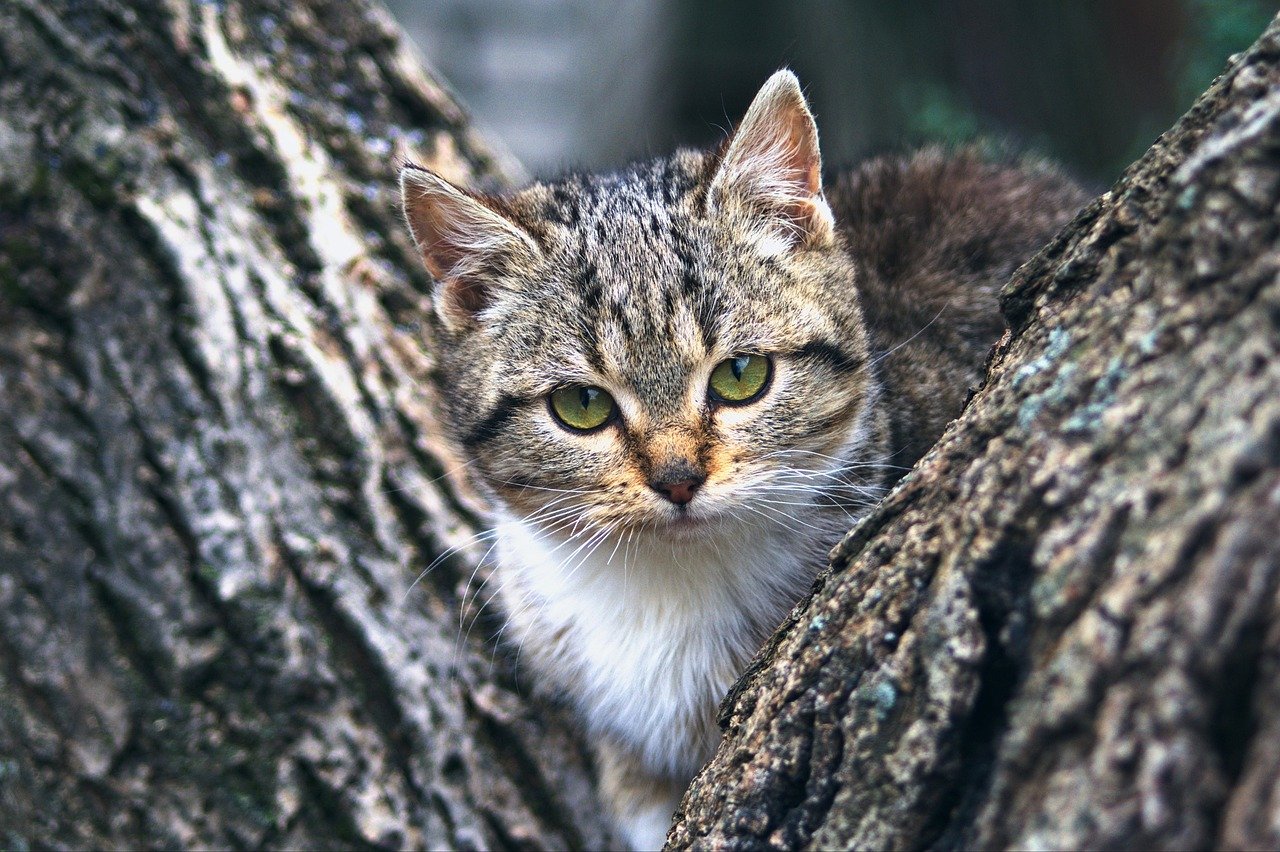
Signs of Dehydration
Recognizing the signs of dehydration in older pets can sometimes feel like searching for a needle in a haystack. As our furry companions age, their bodies undergo various changes that can make it tricky to spot when they are not getting enough water. It's crucial to stay vigilant and informed about the signs of dehydration, as early detection can lead to timely intervention and improved health outcomes. So, what should you be on the lookout for?
First and foremost, physical symptoms are often the most apparent indicators. If you notice your pet's gums are dry or sticky, this could be a red flag. Additionally, lethargy is a common symptom; if your usually playful pet seems more tired and less active, it might be time to assess their hydration levels. Another concerning sign is sunken eyes. If you catch yourself gazing into those soulful eyes and they appear less prominent than usual, it could indicate that your pet is dehydrated and in need of a drink.
However, physical symptoms are just the tip of the iceberg. Behavioral changes can also provide critical clues about your pet's hydration status. For instance, if your pet suddenly shows a decreased appetite or seems more irritable than usual, these shifts in behavior could signal that something is off, possibly related to dehydration. Animals can't always vocalize their discomfort, so being attentive to these changes is paramount.
Moreover, take note of any urinary changes. If your pet is urinating less frequently than normal or if the urine appears darker in color, these could be signs of inadequate hydration. Healthy urine should be light yellow; anything darker can indicate that your pet is not drinking enough water. Keeping a close eye on your pet's bathroom habits can provide you with valuable insight into their hydration levels.
In summary, recognizing the signs of dehydration in older pets involves a combination of observing physical symptoms, behavioral changes, and urinary patterns. By being proactive and attentive, you can help ensure that your beloved pet stays hydrated and healthy. Remember, hydration is vital for their overall well-being, and understanding these signs is the first step in providing the best care possible.
- How much water should my older pet drink daily? The amount varies based on size, diet, and activity level, but a general rule is about 1 ounce of water per pound of body weight.
- What should I do if I suspect my pet is dehydrated? Immediately provide fresh water and consult your veterinarian for further advice.
- Are there specific breeds that are more prone to dehydration? Yes, certain breeds, especially those with flat faces, may struggle with hydration due to their anatomy.
- Can I give my pet electrolyte solutions? Consult your vet before giving any supplements, as they can provide tailored advice based on your pet's needs.
Physical Symptoms
When it comes to our beloved older pets, hydration is often an overlooked aspect of their health. As pets age, their bodies undergo various changes that can affect how they retain and utilize water. It's crucial for pet owners to be vigilant about the physical symptoms of dehydration, as early detection can make all the difference in ensuring their furry friends remain healthy and happy. Some common physical symptoms of dehydration include:
- Dry Gums: A quick way to check your pet's hydration level is by examining their gums. Healthy gums should be moist and pink. If you notice that they appear dry or sticky, this could be a sign that your pet is not getting enough water.
- Lethargy: Is your pet less active than usual? While older pets may naturally slow down, sudden lethargy can be a warning sign. If your pet seems unusually tired or reluctant to engage in their favorite activities, it might be time to check their hydration.
- Sunken Eyes: Pay attention to your pet's eyes. If they appear sunken or dull, this could indicate dehydration. This symptom is particularly concerning and warrants immediate attention.
In addition to these physical signs, it's essential to be aware of the overall demeanor of your pet. An older dog or cat that is usually playful but suddenly seems disinterested in their surroundings may be struggling with hydration. Just like humans, pets can become irritable when they are not feeling their best. If you notice any of these symptoms, it’s a good idea to consult with your veterinarian for a thorough evaluation.
Another effective method for assessing hydration is the skin tent test. Gently pinch the skin at the back of your pet's neck and release it. If the skin quickly returns to its normal position, your pet is likely well-hydrated. However, if the skin takes a moment to settle back, this could indicate dehydration. Remember, being proactive is key; addressing hydration issues early can prevent more serious health complications down the line.
In conclusion, recognizing the physical symptoms of dehydration in older pets is vital for their health and well-being. By keeping an eye out for dry gums, lethargy, sunken eyes, and changes in behavior, you can take the necessary steps to ensure your furry companion stays hydrated. Don't hesitate to reach out to your vet if you have concerns; after all, your pet's health is worth it!
Q: How much water should my older pet drink daily?
A: The general rule is that pets should drink about one ounce of water per pound of body weight each day. However, this can vary based on factors like diet, activity level, and climate.
Q: Can I give my pet water from the tap?
A: Yes, as long as your tap water is safe for drinking. Some pets may prefer filtered or bottled water, so it's worth experimenting to see what they like best.
Q: What should I do if I suspect my pet is dehydrated?
A: If you notice any signs of dehydration, it's important to consult with your veterinarian as soon as possible. They can provide guidance and treatment options to help rehydrate your pet.
Behavioral Changes
When it comes to our beloved older pets, their behavior can often serve as a window into their overall health, especially regarding hydration. As they age, pets may exhibit subtle changes that can easily go unnoticed, but these shifts can be significant indicators of dehydration. For instance, if your furry friend suddenly shows a decreased appetite, it could be more than just a picky phase; it might signal that they are not feeling their best due to insufficient water intake. Just like humans, pets rely on hydration to maintain their energy levels and overall mood. If they're not drinking enough, they may become more lethargic, opting to nap instead of engaging in their usual playful antics.
Moreover, increased irritability can also be a red flag. Have you noticed your once-affectionate pet becoming a bit more grumpy or withdrawn? This behavioral shift can indicate discomfort, which may stem from dehydration. Pets can't always vocalize their needs, so it's our responsibility as pet owners to pay close attention to these changes. Think of it as their way of telling us, "Hey, something's not right!"
Another behavioral sign to watch for is a change in their social interactions. Older pets that once enjoyed cuddling or playing may start to isolate themselves. This could be a cry for help, signaling that they don't have the energy or motivation to engage due to dehydration. It's essential to observe how your pet interacts with their environment and other family members.
In summary, keeping an eye on your older pet's behavior is crucial. The following are key behavioral changes to monitor:
- Decreased appetite: Less interest in food may indicate hydration issues.
- Increased irritability: A grumpy demeanor can signal discomfort.
- Social withdrawal: Isolation from family activities may reflect low energy levels.
By being vigilant and responsive to these behavioral changes, you can help ensure your older pet remains happy and healthy. Remember, hydration plays a crucial role in their well-being, and you are their best advocate!
Q: How can I tell if my older pet is dehydrated?
A: Look for signs such as dry gums, lethargy, sunken eyes, and changes in appetite or behavior. Regularly monitor their drinking habits and urination patterns.
Q: What are some hydrating foods I can give my older pet?
A: Foods high in moisture, such as wet dog or cat food, fruits like watermelon, and vegetables like cucumbers can help boost hydration.
Q: How often should I encourage my pet to drink water?
A: Ensure your pet has access to fresh water at all times and encourage them to drink regularly, especially during hot weather or after exercise.
Q: Can dehydration in pets be serious?
A: Yes, dehydration can lead to severe health issues, including kidney damage. It's essential to address hydration needs promptly.
Urinary Changes
When it comes to our beloved older pets, can be one of the most telling signs of hydration issues. As pets age, their bodies undergo numerous changes, and their urinary habits can shift significantly. It’s crucial to pay attention to these changes, as they can indicate whether your pet is getting enough water or if they are at risk of dehydration. For instance, if you notice your pet is urinating less frequently than usual, this could be a red flag. On the flip side, an increase in urination can also signal a problem, potentially indicating that their kidneys are struggling or that they are not absorbing water effectively.
Moreover, the color of your pet's urine can provide valuable insight into their hydration status. Healthy urine is typically light yellow, but if it appears darker, this could mean your pet is dehydrated. Conversely, if the urine is very pale or even clear, it might suggest that your pet is drinking too much water, which could also be a sign of underlying health issues. Keep an eye on these changes, as they can be subtle yet significant.
Here’s a quick reference table to help you understand the potential implications of different urinary changes in your older pet:
| Urine Color | Possible Implication |
|---|---|
| Dark Yellow | Dehydration |
| Light Yellow | Healthy Hydration |
| Clear | Possible Overhydration or Kidney Issues |
| Cloudy or Murky | Possible Infection or Other Health Concerns |
In addition to monitoring the frequency and color of your pet’s urine, be aware of any changes in their bathroom habits. If your pet starts to strain while urinating or seems to have difficulty, this can indicate a urinary tract infection or other serious conditions that require immediate veterinary attention. Remember, being proactive about these signs can make a world of difference in your pet's health.
In conclusion, keeping a close eye on your older pet's urinary changes is essential for ensuring they remain hydrated and healthy. If you notice any alarming signs, don’t hesitate to consult your veterinarian. After all, your furry friend relies on you to look out for their well-being!
- How much water should my older pet drink daily? - Generally, pets should drink about 1 ounce of water per pound of body weight each day. However, this can vary based on their diet and activity level.
- What are some signs that my pet is dehydrated? - Look for symptoms such as dry gums, lethargy, loss of skin elasticity, and changes in urination.
- Can certain foods help with hydration? - Yes! Foods with high moisture content, like wet dog or cat food, can help keep your pet hydrated.
- What should I do if I suspect my pet is dehydrated? - Contact your veterinarian immediately for advice and potential treatment options.
Risk Factors for Dehydration
This article explores the critical role hydration plays in the health and well-being of older pets, highlighting various aspects of hydration that pet owners should be aware of.
Older pets have unique hydration requirements due to changes in their bodies. Understanding these needs is essential for ensuring they receive adequate water intake for optimal health.
Recognizing the signs of dehydration in older pets can be challenging. Knowing what to look for can help you act quickly to address their hydration needs.
Physical symptoms such as dry gums, lethargy, and sunken eyes can indicate dehydration. Understanding these signs can help you monitor your pet's hydration status effectively.
Behavioral changes like decreased appetite or increased irritability may also signal dehydration. Observing these changes can be crucial for timely intervention.
Changes in urination frequency or color can indicate hydration issues. Monitoring your pet's bathroom habits can provide valuable insight into their hydration levels.
When it comes to keeping our furry friends hydrated, there are several risk factors that can significantly increase the likelihood of dehydration in older pets. Just like us, pets can face a variety of challenges as they age, and being aware of these can make all the difference in their health. For instance, certain medical conditions such as kidney disease or diabetes can lead to increased fluid loss, making it crucial for pet owners to be vigilant. Additionally, medications, particularly diuretics, can exacerbate dehydration by prompting more frequent urination.
It’s also worth noting that environmental factors play a huge role. Hot weather can lead to excessive panting and sweating, which can quickly deplete your pet’s water reserves. Moreover, during the summer months, pets may be less inclined to drink water if they are outdoors for extended periods. Age-related changes can also impact a pet's desire to drink; older pets may not feel thirsty even when their bodies require more fluids. This is why it’s essential to create a routine that encourages drinking, regardless of their apparent thirst.
Here’s a quick rundown of common risk factors for dehydration in older pets:
- Medical conditions: Kidney disease, diabetes, and other chronic illnesses.
- Medications: Diuretics and other drugs that increase urination.
- Environmental conditions: High temperatures and humidity levels.
- Age-related issues: Decreased thirst response and mobility limitations.
By keeping an eye on these risk factors, you can take proactive steps to ensure your older pet stays properly hydrated, which is vital for their overall well-being.
Implementing effective hydration strategies is vital for maintaining your older pet's health. Simple changes can significantly improve their water intake and overall well-being.
Ensuring your pet has easy access to fresh water at all times can encourage them to drink more. Consider placing multiple water bowls around your home.
Incorporating hydrating foods into your pet's diet can boost their overall fluid intake. Foods with high moisture content can be beneficial for older pets.
Regularly monitoring your pet's hydration levels is essential for early detection of potential issues. Simple techniques can help you assess their hydration status effectively.
Q: How much water should my older pet drink daily?
A: The general rule is about 1 ounce of water per pound of body weight. However, this can vary based on activity level, diet, and health conditions.
Q: What can I do if my pet refuses to drink water?
A: Try offering flavored water, ice cubes, or wet food to encourage them. You can also consult your vet for further advice.
Q: How can I tell if my pet is dehydrated?
A: Look for signs such as dry gums, lethargy, and decreased skin elasticity. If you notice any concerning symptoms, consult your veterinarian.
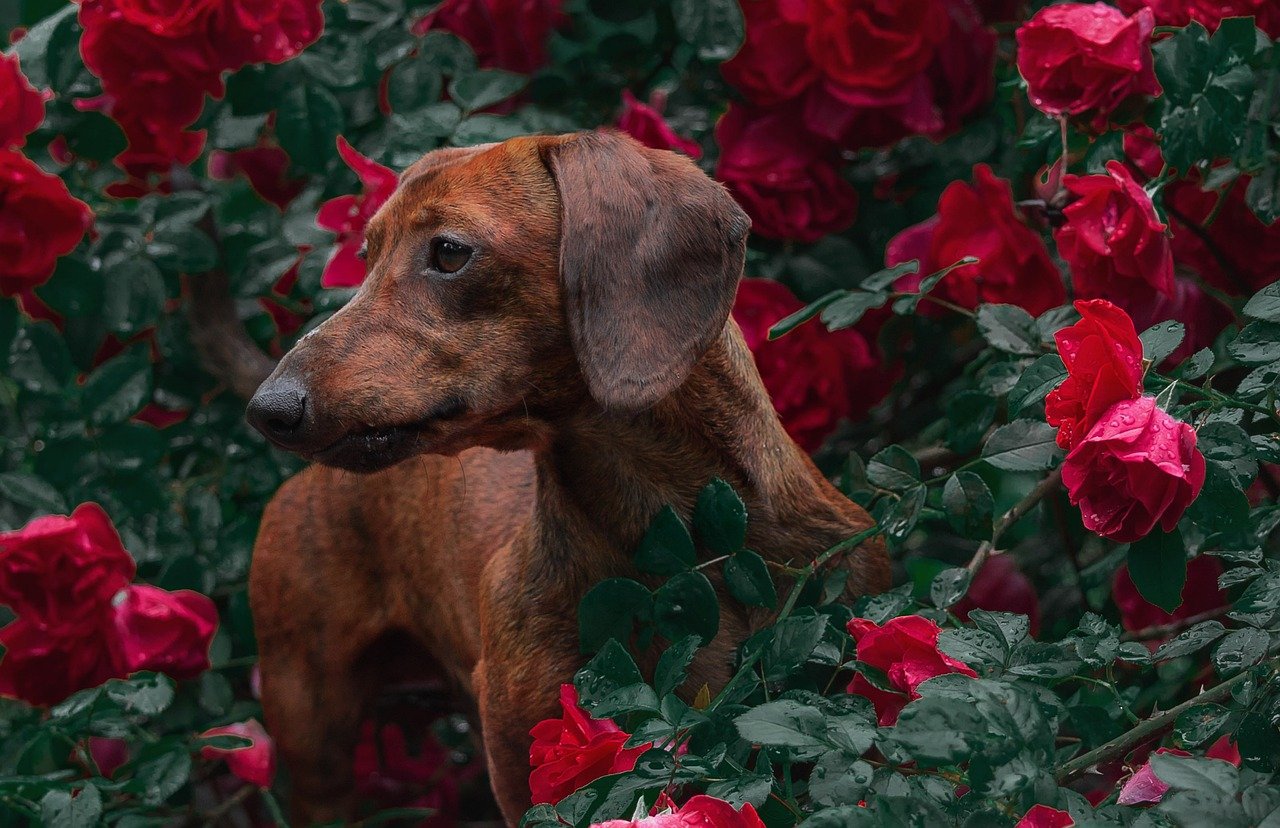
Hydration Strategies
When it comes to keeping our beloved older pets hydrated, implementing effective hydration strategies is not just beneficial; it's essential. As pets age, their bodies undergo various changes that can affect their thirst mechanisms and overall water intake. Therefore, taking a proactive approach can make a world of difference in their health and well-being. So, what can you do to ensure your furry friend stays hydrated? Let’s dive into some practical and simple strategies!
First and foremost, water accessibility is key. Imagine being thirsty but having to trek across the house to get a drink. Not ideal, right? The same goes for our pets. Make sure your older pet has easy access to fresh water at all times. Consider placing multiple water bowls around your home—one in the living room, one in the kitchen, and maybe even one in the bedroom. This way, your pet won't have to wander far to quench their thirst. Also, remember to change the water regularly to keep it fresh and appealing.
Another effective strategy is to incorporate hydrating foods into your pet's diet. Just like humans, pets can benefit from foods that have high moisture content. Think about adding wet food to their meals or offering treats like watermelon or cucumber. These foods not only provide hydration but also add variety to their diet, making mealtime more exciting! For instance, you could mix some wet food with their dry kibble to create a delicious and hydrating meal. Here’s a quick table to illustrate some hydrating food options:
| Food Item | Moisture Content (%) |
|---|---|
| Watermelon | 92% |
| Cucumber | 95% |
| Canned Dog Food | 75%-80% |
| Broth (low sodium) | 95% |
Moreover, you can also try using a pet water fountain. Many pets are attracted to running water, and a fountain can encourage them to drink more frequently. These fountains keep the water circulating and aerated, which can make it more appealing. Just like how we enjoy a refreshing drink from a cool stream, your pet might find a water fountain irresistible!
Lastly, monitoring your pet’s hydration levels is crucial. Regularly check their water intake and watch for any changes in their behavior or physical condition. If you notice they are drinking less than usual, it might be time to consult your veterinarian. Keeping a close eye on their hydration status can help you catch potential issues before they escalate.
In summary, keeping your older pet hydrated doesn't have to be a daunting task. By ensuring easy access to water, incorporating hydrating foods, using enticing water sources, and monitoring their intake, you can significantly improve their hydration levels and overall health. Remember, a well-hydrated pet is a happy pet!
- How much water should my older pet drink daily? The general rule is about 1 ounce of water per pound of body weight, but this can vary based on factors like diet and activity level.
- What are the signs that my pet is dehydrated? Look for dry gums, lethargy, sunken eyes, and changes in urination patterns.
- Can I give my pet flavored water? Yes, but ensure it's safe and low in sodium. Broths can be a good option, but always check with your vet first.
- Is it normal for older pets to drink less water? While some decrease in water intake is common with age, significant changes should be discussed with your veterinarian.
Water Accessibility
This article explores the critical role hydration plays in the health and well-being of older pets, highlighting various aspects of hydration that pet owners should be aware of.
Older pets have unique hydration requirements due to changes in their bodies. Understanding these needs is essential for ensuring they receive adequate water intake for optimal health.
Recognizing the signs of dehydration in older pets can be challenging. Knowing what to look for can help you act quickly to address their hydration needs.
Physical symptoms such as dry gums, lethargy, and sunken eyes can indicate dehydration. Understanding these signs can help you monitor your pet's hydration status effectively.
Behavioral changes like decreased appetite or increased irritability may also signal dehydration. Observing these changes can be crucial for timely intervention.
Changes in urination frequency or color can indicate hydration issues. Monitoring your pet's bathroom habits can provide valuable insight into their hydration levels.
Certain factors can increase the risk of dehydration in older pets. Identifying these risks can help you take preventive measures to keep your pet hydrated.
Implementing effective hydration strategies is vital for maintaining your older pet's health. Simple changes can significantly improve their water intake and overall well-being.
Ensuring your pet has easy access to fresh water at all times can significantly encourage them to drink more. Imagine being thirsty and having to search for water; it’s not just inconvenient, it’s downright frustrating! To prevent this for your furry friend, consider placing multiple water bowls throughout your home. This way, no matter where they are lounging or playing, they can easily quench their thirst.
It's also important to keep these water bowls clean and filled with fresh water. Pets can be picky, and stale water might deter them from drinking. Here are some tips to enhance water accessibility:
- Use wide, shallow bowls to prevent whisker fatigue in cats.
- Consider using a pet water fountain; many pets are attracted to running water.
- Place bowls in areas where your pet spends the most time, such as their favorite resting spots or near their food dishes.
Additionally, if your pet is more active, especially during warmer months, they may require even more water. Always be prepared by having extra water available when you go for walks or outings. Remember, hydration is not just about quantity; it’s about making water readily available and appealing to your beloved older pet.
Regularly monitoring your pet's hydration levels is essential for early detection of potential issues. Simple techniques can help you assess their hydration status effectively.
Q: How much water should my older pet drink daily?
A: The general rule of thumb is that pets should drink about one ounce of water per pound of body weight daily. However, this can vary based on factors like activity level and diet.
Q: What are some signs that my pet isn't drinking enough water?
A: Look for signs such as dry gums, lethargy, decreased appetite, and changes in urination patterns.
Q: Can I add water to my pet's food to increase their hydration?
A: Absolutely! Adding water or broth to dry food can help increase their fluid intake, especially for pets that are reluctant to drink.
Q: Are there any specific breeds that are more prone to dehydration?
A: While all pets can become dehydrated, certain breeds, especially those with short snouts (like Bulldogs), may struggle more with heat and hydration.
Hydrating Foods
When it comes to keeping our older pets hydrated, food can play a surprisingly significant role. Just like us, pets can benefit from foods that not only nourish them but also help maintain their hydration levels. Incorporating into your pet's diet can be a game-changer, especially for those furry friends who may not drink enough water on their own. Think of it as adding a splash of moisture to their meals, making hydration both tasty and effective!
So, what exactly are hydrating foods? Generally, these are foods that have a high water content and can contribute to your pet's overall fluid intake. For pets, especially older ones, the goal is to combine nutrition with hydration. Here are a few examples of hydrating foods that can be beneficial:
- Watermelon: This juicy fruit is not only delicious but also packed with water—about 92%! Just be sure to remove the seeds and rind before offering it to your pet.
- Blueberries: These tiny powerhouses are not only hydrating but also rich in antioxidants, making them a healthy treat.
- Pumpkin: Not only is pumpkin a great source of fiber, but it also contains moisture that can help keep your pet hydrated. Just make sure to use plain, canned pumpkin without added sugars or spices.
- Broccoli: This green vegetable has a high water content and is also loaded with vitamins. You can serve it steamed or raw, depending on your pet's preference.
- Carrots: Crunchy and hydrating, carrots can be a fun snack for your pet. They’re great for their teeth and can help keep them hydrated too!
In addition to these foods, you might consider adding wet or canned pet food to their diet. These options typically contain more moisture than dry kibble, which can significantly boost their hydration levels. Just like how a hearty soup can warm you up, a moist meal can help your pet feel refreshed and hydrated.
It's also important to note that some pets may be more receptive to hydrating foods than others. You might need to experiment a little to find out what your pet enjoys most. For instance, if your dog loves peanut butter, try mixing a small amount of it with some watermelon puree for a tasty treat. With older pets, it’s essential to keep their preferences in mind, as their tastes can change over time.
Moreover, always keep an eye on your pet's overall health. If you notice any changes in their eating or drinking habits, it’s a good idea to consult with your veterinarian. They can provide tailored advice on how to best keep your furry friend hydrated through diet and other methods.
Q1: How can I tell if my pet is dehydrated?
A1: Look for signs such as dry gums, lethargy, sunken eyes, and decreased appetite. If you notice any of these symptoms, it's essential to consult your vet.
Q2: Are there any foods I should avoid giving my pet?
A2: Yes, some foods can be harmful to pets, such as grapes, raisins, onions, and chocolate. Always check with your vet before introducing new foods.
Q3: How much water should my older pet drink daily?
A3: While it varies by size and activity level, a general rule is that pets should drink about 1 ounce of water per pound of body weight each day. However, consult your vet for personalized recommendations.
Q4: Can I add water to my pet's dry food?
A4: Absolutely! Adding water to dry food can help increase your pet’s fluid intake and make the food more palatable.
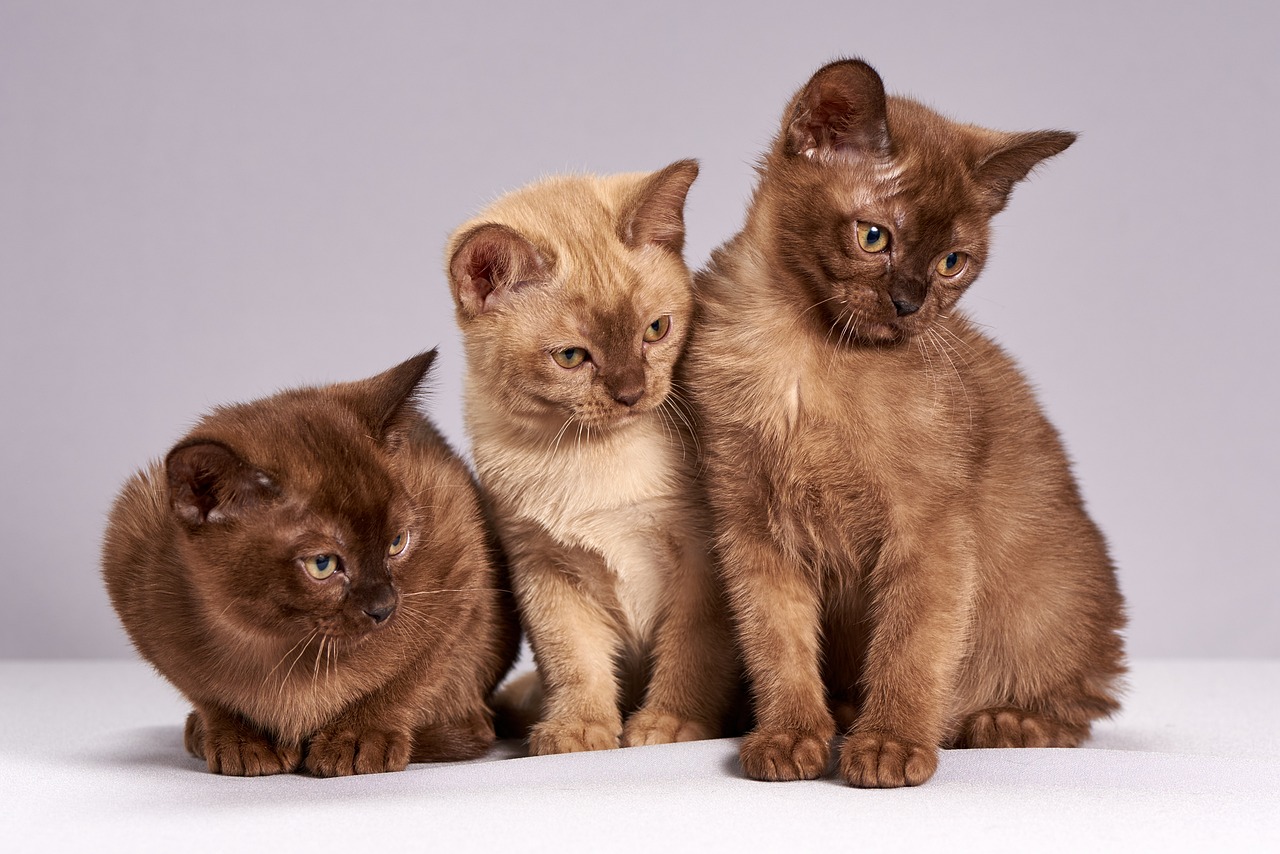
Monitoring Hydration Levels
Keeping an eye on your older pet’s hydration levels is not just a good practice; it’s a necessity! As our furry companions age, they can become less aware of their thirst, making it crucial for us, as pet parents, to step in and monitor their hydration status actively. Regular assessments can help catch any potential problems early, ensuring that your beloved pet stays healthy and happy.
One of the simplest ways to monitor hydration is through the skin tent test. Gently pinch the skin at the back of your pet’s neck and release it. If the skin snaps back quickly, your pet is likely well-hydrated. However, if it takes a moment to return to its normal position, it may indicate dehydration. This quick test can be a lifesaver!
Another key indicator is your pet’s behavior. Are they drinking water more frequently or less? Changes in drinking habits can signal hydration issues. Additionally, consider their urination patterns. Healthy pets typically urinate regularly, and the urine should be light yellow. Dark or concentrated urine can be a red flag that your pet needs more fluids. Keeping a log of these habits can help you notice any significant changes over time.
To make monitoring easier, you could also set up a simple hydration schedule. This can include:
- Checking their water bowl multiple times a day to ensure it’s full and fresh.
- Recording their drinking habits in a journal.
- Setting reminders for yourself to encourage them to drink, especially if they seem reluctant.
Moreover, you can consult your veterinarian for a more tailored approach to monitor hydration levels. They might suggest specific tests or even recommend certain foods that promote hydration. Remember, your vet is your best ally in keeping your pet healthy!
In summary, monitoring your older pet's hydration levels is essential for their well-being. By utilizing simple tests, observing behavior, and keeping a close watch on their drinking and urination habits, you can help ensure your furry friend remains hydrated and healthy. It's all about being proactive and attentive to their needs, so they can continue to enjoy life to the fullest!
Q: How much water should my older pet drink daily?
A: Generally, pets should drink about 1 ounce of water per pound of body weight per day. However, this can vary based on their diet, activity level, and health conditions.
Q: What are the signs that my pet is dehydrated?
A: Look for signs such as dry gums, lethargy, sunken eyes, and decreased appetite. If you notice these symptoms, consult your veterinarian immediately.
Q: Can I give my pet flavored water?
A: While some pets may enjoy flavored water, it's essential to ensure that any flavoring is safe for pets. Always consult with your vet before introducing new substances to your pet's diet.
Q: Are there specific foods that can help keep my pet hydrated?
A: Yes! Foods with high moisture content, such as wet dog or cat food, watermelon, and cucumbers, can help boost your pet’s hydration levels.
Q: How can I encourage my older pet to drink more water?
A: You can encourage your pet to drink more by providing fresh water regularly, using pet water fountains, and incorporating hydrating foods into their diet. You can also try adding ice cubes to their water bowl for a fun twist!
Frequently Asked Questions
- Why is hydration particularly important for older pets?
As pets age, their bodies undergo various changes that can affect their hydration needs. Older pets may not feel thirsty as often, and their kidneys might not function as efficiently. Ensuring they stay hydrated is crucial for maintaining their health and preventing complications associated with dehydration.
- What are the common signs of dehydration in older pets?
Common signs of dehydration in older pets include dry gums, lethargy, sunken eyes, and decreased skin elasticity. Additionally, you may notice changes in their behavior, such as irritability or a decreased appetite. Monitoring these signs can help you take action before the situation worsens.
- How can I encourage my older pet to drink more water?
Encouraging your older pet to drink more water can be as simple as providing multiple water bowls around your home, ensuring they have easy access to fresh water at all times. You can also try adding water or low-sodium broth to their food, or even offering ice cubes as a fun treat.
- Are there specific foods that can help with hydration?
Yes! Incorporating hydrating foods into your pet's diet can significantly boost their fluid intake. Foods like watermelon, cucumbers, and specially formulated wet pet food contain high moisture content, making them excellent choices for keeping your older pet hydrated.
- How can I monitor my pet's hydration levels at home?
You can monitor your pet's hydration levels by checking their skin elasticity, observing their drinking habits, and keeping an eye on their urine color and frequency. If their urine is darker than usual or if they are urinating less frequently, it may indicate dehydration.
- What risk factors should I be aware of regarding dehydration in older pets?
Several risk factors can increase the likelihood of dehydration in older pets. These include certain medical conditions, medications that may cause increased urination, and hot weather. Being aware of these factors can help you take proactive steps to ensure your pet stays hydrated.




